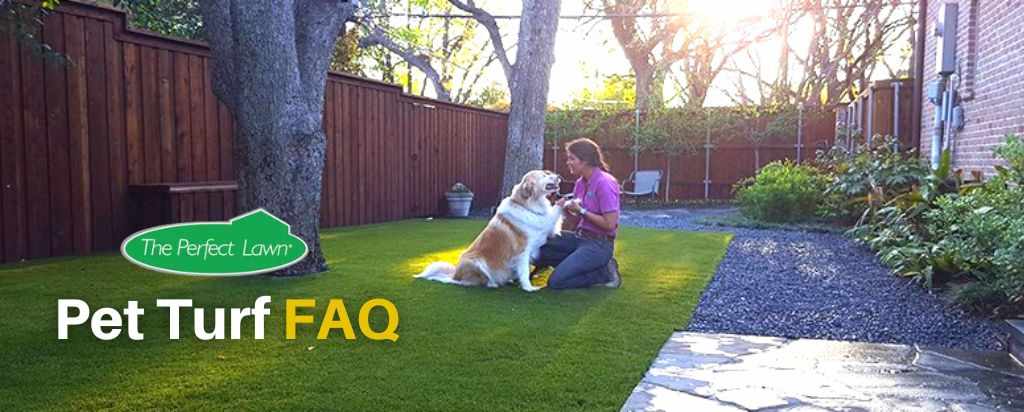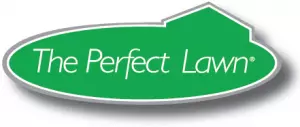Pet Turf FAQ
Pet Turf FAQ – The Perfect Lawn
Table of Contents
We welcome questions, therefore are happy to answer all of your pet turf frequently asked questions. Some pet turf frequently asked questions and their answers are below. If you do not find your answer or want more details, please contact us.

Is artificial grass pet-friendly?
Artificial grass is pet-friendly! Artificial grass is made with non-toxic materials and does not have any toxic chemicals. It also doesn't attract insects and pests, which makes it an excellent option for homes with pets.
Is artificial grass safe for pets?
Artificial grass is extremely safe for pets. It's chemical-free, doesn't require pesticides and other chemicals to maintain, and doesn't attract insects and parasites.
Does artificial grass get hot?
Artificial grass gets hotter than natural grass. Since it's made of synthetic materials, it absorbs more heat than natural grass. To keep your pet cool, we recommend adding a layer of infill.
Does dog urine damage fake grass?
Your dog's urine doesn't damage or stain your pet turf. When properly graded and drained, urine flows like rainwater, leaving no room for yellow spots to form. The use of antibacterial infill also helps keep your fake grass odor free.
Is artificial grass easy to clean?
Cleaning artificial grass is as easy as hosing off areas with dirt. For tougher stains, you can use a solution of mild soap and water solution mixed with white vinegar. You can also use a synthetic brush to loosen up any caked-on dirt or debris, brush your turf, and bring back its lively appearance.
Avoid using bleach or a metal or wire brush when cleaning our pet turf, as these could cause damage.
What is the best way to install pet-friendly artificial grass?
Here's a step by step process on the best way to install pet-friendly artificial grass.
1- Start by first removing any grass and 2 inches of soil.
2- Apply weed killer to help prevent any weeds from growing.
3- Add gravel or granite, grade the site away to ensure effective drainage, and compact it. Now you're ready to install your pet-friendly artificial grass!
4- Lay your drainage layer on the compacted surface. Use nails to keep the drain core in place. Once the drainage layer is in place, you can start installing your pet turf.
5- Make sure to unroll the turf in one direction and if you're using different pieces make sure the blades face the same direction.
6- Stretch, smooth out and nail down the turf on the perimeter.
7- After the turf is installed, add your antibacterial infill.
To avoid any losses when installing pet turf, check out this article on common mistakes when installing artificial grass.
Why choose artificial grass for dogs?
There are many reasons to choose artificial grass for dogs.
Artificial grass is easy to clean and maintain, it doesn't get muddy, and it's a great way to create a safe space for your pets to play.
It's also pet-friendly and non-toxic, so you can rest assured that your pets are safe.
Synthetic grass is also eco-friendly and doesn’t require fertilizer, and herbicides to maintain. This means your pet isn’t exposed to the toxic ingredients in these chemicals.
If you're looking for a low-maintenance, pet-friendly solution, artificial grass is the way to go!
Artificial grass also doesn't attract insects or pests, which is a huge plus for pet owners.
What is the difference between turf and pet turf?
The main difference between pet turf and traditional turf is the microbial properties that pet turf has. Pet-friendly synthetic turf also tends to be softer than regular turf, which is more comfortable for your pets.
Pet turf also drains better than traditional artificial turf, so you don't have to worry about your pets tracking mud and dirt into the house.
What do you put under artificial grass for dogs?
Most people put either gravel, granite, or graded grano underneath the artificial grass. Below this layer is a layer of large rocks meant to help with drainage.
Can dogs pee and poop on artificial grass?
Dogs can pee and poo on pet turf. When properly graded and drained, urine flows like rainwater, leaving no room for yellow spots to form. The use of antibacterial infill also helps keep your fake grass odor free.
Poop can be scooped up like you would on natural grass, then the area hosed with water.
How to care for pet turf?
Artificial grass maintenance is easy. You'll just need to regularly rake or brush the turf to keep it looking its best.
It's also important to regularly clean up any pet waste, as this can cause bacteria to build up. The best way to clean pet waste is to scoop it up and then hose down the area.
You can also spray your turf with anti bacterial turf cleaner to help mitigate dog urine odor.
